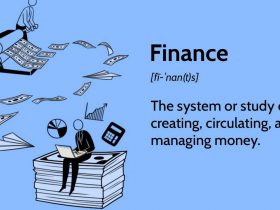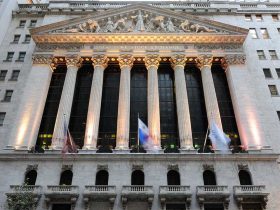If you had a crystal ball that told you what the stock market is going to do, how would you use it? To pick investments, right? Well, you sort of have a crystal ball from now through at least the fourth quarter.
At least, you have a pretty good idea what the stock market has done in years with something in common with 2022. That’s because the stock market has a strong record of rising after midterm elections.
Stock Market
And this isn’t just a history lesson. Keen market observers say individual investors can take advantage of the stock market’s midterm election pattern. Andrew Schrage, co-founder and CEO of MoneyCrashers.com, spells out why he likes large-cap funds in general and equity-income funds.
Ameriprise (AMP) Chief Market Strategist Anthony Saglimbene details which election outcome should help health care, financials and technology. He also explains which sectors should benefit from recently passed legislation.
Paul Schatz, vice president and treasurer of the National Association of Active Investment Managers, recommends funds for betting on large caps balanced by small doses of midcap and small-cap funds. And he lists funds for plays on technology, semiconductors, financials and biotech.
Outperformance Pattern
Some studies show the stock market outperforming in the fourth quarter vs. earlier in the year when there’s a midterm election. Others show the stock market outperforming in the 12 months following midterm elections vs. the prior 12 months. Researchers include U.S. Bank, J.P. Morgan Asset Management and E-Trade (ETFC).
Either way, the midterms tend to trigger market a period of outperformance.
Why? Theories vary. One theory is that markets don’t like uncertainty. Midterm elections end the uncertainty that precedes an election. Investors feel more confident once their questions about upcoming tax policy and monetary policy have been resolved.
But the “why” matters less than the “what” ¡ª the tendency of the market to outperform. And that pattern emerges in study after study.
How To Benefit From The Trend
Now the question is, what are you going to do with this information?
Schrage says individual investors should know the outperformance pattern is not a guarantee of outperformance after this upcoming midterm election. But investors can still try to exploit the tendency of the market to rev up after midterms. That’s especially the case with the diversified, funds-only, long-term portion of their portfolios.
“Both large-cap funds and equity-income funds make sense for investors looking to capitalize on a potential market upturn after the midterm elections without exposing themselves to riskier sectors and styles,” said Schrage, whose MoneyCrashers.com is?a personal finance education website.
Why large-cap mutual funds and ETFs as well as equity-income funds? “Large-cap companies in general and dividend-paying stocks in particular ¡ª especially … with very long track records of stable or increasing dividends ¡ª tend to weather uncertain markets better,” Schrage said.
Investors are already aiming to tap into that perceived stability. Large-cap funds overall and equity-income funds are by far the two categories of mutual funds and ETFs with the most net inflows this year.
Still, Schrage warns investors that a trend is not an ironclad cinch. “The market remains uncertain,” he said. “Many economists expect a recession in the first half of 2023.”
If you do want to try to exploit stock market outperformance after midterm elections, Schrage recommends Vanguard Large-Cap Fund (VV). The $57.6 million Vanguard ETF’s return this year is -14.01%, per Morningstar Direct. Its yield the past 12 months is 1.52%.
If you prefer mutual funds, Schrage recommends considering the Vanguard ETF’s mutual fund nearly identical twin, $25.9 billion Vanguard Large-Cap Index Fund (VLCAX). The fund is down 14.1% this year. Its yield the past 12 months is 1.51%.
Election Impact On Stock Market
Ameriprise’s Saglimbene frames his advice in terms of likely election scenarios. He says that many political observers predict divided government: Republicans running the Senate, Democrats controlling the House.
If that’s the outcome, “We believe a divided government could reduce the odds of significant changes to regulation over the next two years, which may benefit areas such as health care, financials, and technology,” he said.
The Inflation Reduction Act and the so-called Chip Act should encourage U.S. manufacturing of computer semiconductors, he says.
Saglimbene added, “Investments in green technology could also help utilities and other clean energy producers.” But he cautions investors that those benefits may take years to appear.
Stock Market: Safe Plays
NAAIM’s Schatz says the safest way to play a midyear election rally is through large-cap funds like iShares Core S&P 500 ETF (IVV). The $294.9 billion fund is down 17% this year. Its yield the past 12 months is 1.5%.
If you can stomach volatility, Schatz recommends allocating 50% of this midyear election play to large-caps and 25% each to small- and midcaps. The $66.2 billion iShares Core S&P Small-Cap ETF (IJR) is down 14% this year and has a 1.76% trailing 12-month yield. “On the midcap side, I would look at MDY,” Schatz said. That $17.9 billion SPDR S&P Midcap 400 ETF (MDY) is also down 14% and has a 1.2% TTM yield.
“On the sector side, I favor technology and semis in particular with a little software thrown in,” Schatz said. “I like XLK, SOXX and IGV. And I like financials like XLF and biotechs like IBB and XBI.” IBB is the symbol of iShares Biotechnology ETF and XBI is SPDR S&P Biotech ETF.
The $39.8 billion Technology Select Sector SPDR ETF (XLK) is down 24% this year. Its trailing 12-month yield is 0.89%. The $6.1 billion iShares Semiconductor ETF (SOXX) is down 35% this year. Its yield the past 12 months is 1%. iShares Expanded Tech-Software ETF (IGV) is down 30% this year.
The $32.4 billion Financial Select Sector SPDR ETF (XLF) is down 29% this year. Its yield the past 12 months is 2%.
As for the part of your portfolio that consists of individual stocks? Buying and selling them is governed by rules of a time-tested strategy that tells you when to get in and out of individual securities.
IBD Newsletters
Get exclusive IBD analysis and actionable news daily.
IBD Newsletters
Get exclusive IBD analysis and actionable news daily.
Please enter a valid email address
Please select a newsletter
Get these newsletters delivered to your inbox & more info about our products & services. Privacy Policy & Terms of Use
Thank You!
You will now receive IBD Newsletters
Something Went Wrong!
Please contact customer service
Follow Paul Katzeff on?Twitter at @IBD_PKatzeff?for tips about retirement planning and actively run portfolios that consistently outperform.














Leave a Reply